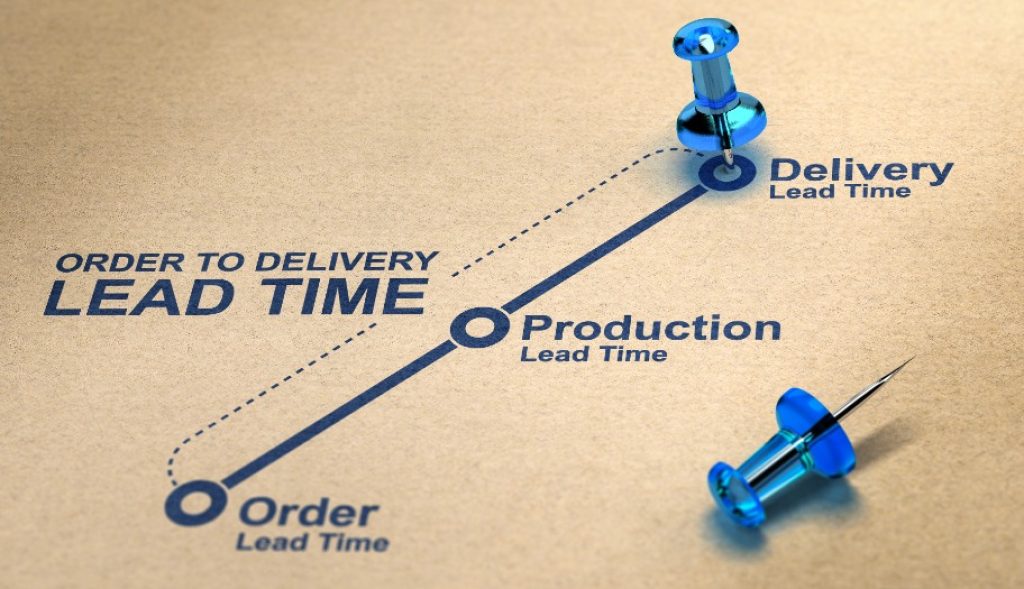15 Dropshipping risks
Dropshipping comes with its own unique set of risks that can impact the success of your business.
Here are 20 of the most common dropshipping risks to consider:
1. Quality control
Dropshipping relies on third-party vendors to fulfill customer orders, which can create a quality control risk. Even though most dropshipping companies take steps to ensure the quality of their vendors’ products and use strict selection criteria, it’s impossible to guarantee perfect product quality with every order.
With dropshipping, you don’t have complete control over the fulfillment process, so you may end up sending something to your customers that doesn’t meet your standards. Additionally, if a vendor fails to meet your expectations in terms of delivery times or customer service levels, it can reflect poorly on your own business.
To mitigate this risk, carefully research each vendor before committing to a partnership and regularly check in with them about their performance. It’s also important to set clear expectations and communicate them clearly with your vendors. Finally, consider offering a satisfaction guarantee to ensure customers are happy with their purchases.
Another way to reduce quality control risks when dropshipping is to take advantage of automation tools and technologies. Automating order fulfilment can help ensure that products arrive on time and in good condition every time.
Additionally, automation can streamline the returns process by automatically issuing refunds or replacements when necessary. By taking advantage of automation, you can save time and hassle while reducing the risk of customer dissatisfaction due to poor product quality.
Automation also allows you to better track shipments so you can quickly identify any potential problems before they become major issues. Together, these steps will help you ensure that your customers receive high-quality products and services whenever they make a purchase from you.
Finally, it’s important to remember that quality control is an ongoing process. As your business grows, you should continue to evaluate and monitor your vendors for any signs of customer dissatisfaction or poor product quality.
Regularly assessing the performance of your vendors will help ensure that all orders are handled correctly and that customer expectations are met every time. Additionally, it will give you peace of mind knowing that you’re offering top-notch products and services to your customers. By taking these steps, you can minimize the risk of complaints due to product quality issues and create a better experience for both yourself and your customers.

2. Delivery times
One of the biggest risks associated with dropshipping is delivery times. Because you are relying on a third party to deliver your goods, there can be delays in the process. This can cost you customers who decide to go elsewhere for their products or do not trust that their orders will arrive on time.
The only way to mitigate this risk is by partnering with reliable suppliers who have a track record of delivering orders quickly and accurately. Additionally, you should make sure to communicate delivery times clearly with your customers so they know what to expect when placing an order from your store.
Having clear policies in place regarding returns and refunds due to delayed deliveries can also help protect your business against customer dissatisfaction caused by late shipments.
Another thing to consider is the potential for unreliable suppliers. Working with suppliers who are known to be unreliable or provide poor-quality products can put your business reputation at risk and lead to unhappy customers.
Make sure you do thorough research before selecting a dropshipping partner and always read customer reviews to make sure they have a good track record. You should also consider setting up quality control protocols so that you can inspect the incoming goods and ensure they meet your standards of quality.
Finally, remember that shipping costs associated with dropshipping can quickly add up if not managed properly. Try to look for competitive rates from carriers and negotiate whenever possible to keep shipping costs low for both you and your customers. By staying on top of these risks, you can ensure that your dropshipping business runs smoothly and successfully.

3. Pricing
Prices may fluctuate drastically over time, and if you’re not careful, this can put a strain on your business. In some cases, a supplier could suddenly increase prices without warning, leaving you to absorb the difference in cost or pass it onto customers.
Furthermore, if a competitor offers lower prices than yours, it will be difficult to remain competitive. To avoid this risk, try researching suppliers thoroughly before choosing one and pay attention to market trends so that you don’t get caught off guard by sudden price spikes.
Additionally, make sure you have back-up suppliers who offer similar products at comparable prices just in case your primary supplier hikes their rates unexpectedly.
Finally, consider offering discounts or special offers to help customers remain loyal to your store. This way, even if your prices rise slightly, you can still attract new customers and keep existing ones happy.
Ultimately, dropshipping is a great business model when done correctly. However, pricing risks are something to be aware of and take into consideration when setting up shop. With a bit of foresight and careful planning, you can ensure that these risks don’t derail your business plans.
4. Returns
Due to the nature of dropshipping, there is a risk of returns and a potential cost associated with them. As the products have been shipped directly from a third-party supplier, any returns that are accepted must be returned to them or else the retailer will face additional costs for returning it themselves.
Furthermore, because many retailers using dropshipping do not carry any inventory, if a return is accepted they may not be able to replace it with another item which can lead to dissatisfied customers.
Therefore, it’s important for retailers to ensure their return policies are clear and easy for customers to understand so that they can make an informed decision about their purchase and help avoid unnecessary returns.
Additionally, retailers should take advantage of tracking data from their suppliers to ensure that items reach their customers quickly and without any issues. By doing so, they can minimize the chances of returns and related costs.
Finally, retailers should also work closely with their suppliers to establish a clear return process in case of any issues that may arise. This will help ensure that customers have a positive experience and are more likely to stay loyal.
In summary, there is a risk of returns when it comes to dropshipping and associated costs can be high if not managed properly. However, by taking the necessary precautions such as having clear return policies and tracking data from suppliers, retailers can reduce the chances of returns and related costs while providing customers with an enjoyable shopping experience. Doing so will ultimately benefit both sides in the long run.
5. Inventory issues
When it comes to dropshipping, inventory issues are a major risk. Dropshippers rely on their suppliers for inventory and if something happens to the supplier’s stock, then the dropshipper will be unable to fill orders as promised.
The longer an order takes to fulfill, the more likely customers are to become unhappy and look elsewhere for a better shopping experience. To minimize this risk, dropshippers should pay close attention to their suppliers and know when they need to bring in new sources of inventory or switch suppliers altogether.
Additionally, they should always have an alternative supplier available in case of emergency and make sure that their current supplier is reliable at all times. By implementing these strategies, dropshippers can protect themselves from potential inventory issues that could otherwise hamper their success.

6. Branding
You may not have a brand identity that sets you apart from your competitors or access to resources and tools necessary for creating an effective consumer-facing brand. Your suppliers may not be able to provide branded packaging and other unique merchandise that will help you create a strong, memorable brand identity.
Without these resources, you may struggle to attract customers and build long-term relationships with them. Furthermore, it can be difficult to differentiate yourself from other online stores that offer the same products as you do.
It’s essential to take the time to develop your own unique branding strategy if you want to succeed in the competitive world of dropshipping. Doing so will help you build customer loyalty and trust, as well as boost your sales and profits.
Additionally, make sure to select suppliers that are willing to work with you when it comes to branding. They should be able to provide branded packaging and merchandise, as well as help you create promotional materials and other content for your business.
This will ensure that your customers recognize and remember your brand even after they’ve completed their purchase. Not having control over your branding may be a risk, but taking the time to create an effective strategy and selecting the right suppliers can help you reduce that risk.
With the right preparation, you can develop a strong brand identity and gain customer loyalty — which will ultimately lead to long-term success in dropshipping.
7. Quality of customer service
A bad customer service experience can lead to a negative review and lost sales for the dropshipping retailer. An effective way to mitigate this risk is to have staff dedicated solely to customer service and provide them with the necessary training and resources they need in order to provide quality support.
This ensures that customers are getting responses to their inquiries in a timely manner and that they are receiving the help they need. Additionally, it is important to have processes in place for monitoring customer service interactions and responding quickly to any feedback or complaints.
This way, dropshipping retailers can remain proactive and address any issues before they become larger problems.
Finally, offering a money-back guarantee or free returns can go a long way in assuring customers of the quality of their service and help build trust. By taking the necessary steps to mitigate customer service risks, dropshipping retailers can ensure that their customers are receiving the best possible experience.
8. Supplier reliability
It’s important to make sure that your suppliers are reliable and able to keep up with customer demands in order to maintain the quality of your dropshipping business.
It is important to research potential suppliers before forming any partnerships. Make sure you understand their terms, such as payment options, delivery time frames, and return policies. You should also check their customer feedback to get a better idea of the quality of their service.
If you feel like your supplier is showing signs of unreliability, it’s best to find an alternative. Consider keeping a backup supplier on hand in order to quickly switch if needed. This can ensure that your business operations remain smooth and efficient.
Finally, it is a good idea to have a system in place to keep track of supplier performance metrics. Monitor delivery times, customer feedback, and product quality on an ongoing basis so you can tell when something goes wrong. This will help you take the necessary steps to maintain reliable partnerships with your dropshipping suppliers.
By taking the proper precautions and staying on top of supplier performance, you can protect your business from the risks associated with unreliable dropshipping suppliers. With reliable partners in place, you can ensure that your customers have a great experience and you maintain high-quality operations for your business.
9. Cash flow management
Tracking and allocating your funds is key to helping you manage risk. Keeping a budget and dividing up expenses into categories can help keep track of spending, which will allow you to better forecast what will be coming in and out of your accounts. Additionally, having a plan on how to best access and use your funds can help you stay on track.
Creating safeguards against fraud is also important in cash flow management. Dropshipping suppliers are often overseas and may not have the same security protocols as your local vendors. Taking extra precautions like researching potential suppliers, setting up payment terms with the supplier, and using third-party escrow services can help protect your business against fraudulent activities.
10. Fraud risk
- There is a greater risk of fraud when dealing with international suppliers as it is more challenging to verify credentials and product quality.
- Fraudulent orders: There is a risk of lost revenue due to fraudulent orders as there are no payment guarantees on international orders.
Dropshipping involves multiple parties which can be subject to a range of legal issues such as intellectual property rights.
11. Security
Dropshipping is vulnerable to security threats as it involves sharing sensitive customer data with multiple suppliers.
12. Communication gaps
Poor communication between the dropshipper and supplier can lead to errors in order fulfilment process which can affect customer satisfaction.
13. Language barrier
Dropshipping products from international suppliers can be challenging due to the language barrier, which can lead to misunderstandings related to orders and customer service.
14. Shipping costs
Dropshipping can be a great way to start selling online without having to invest in expensive upfront inventory. It allows anyone to easily open an online store with minimal financial risk and no need for large storage space. However, there are some downsides to consider when it comes to dropshipping shipping costs.
Shipping costs can quickly add up, particularly when shipping items from overseas suppliers. Because you are not dealing with a third-party logistics provider, you may have to pay additional fees for customs clearance and handling. Even if you’re offering free shipping on orders over a certain amount, these costs can still be significant.
Another potential problem is that customers often expect free shipping, and may not be willing to pay extra for it. If you are unable to offer free or discounted shipping, customers might take their business somewhere else. Additionally, overseas suppliers can be unreliable when it comes to delivery times, resulting in unhappy customers and possible returns.
In some cases, dropshipping can also lead to problems with customs regulations. If you are shipping items to countries with restrictive import laws, there is always a risk of delays or even confiscation of goods by customs. This can lead to significant losses for the merchant if they cannot recover the costs from their supplier.
15. Competitive advantage:
Dropshipping does not provide any competitive edge since many other businesses are using the same method for product fulfillment
Protect your Dropshipping business with the right insurance policy
When it comes to running a successful dropshipping business, insurance is an important factor that should be taken into consideration. Without the right kind of coverage, you could find yourself facing significant financial losses in the event of any unexpected disruptions or damages. There are several types of policies available that can provide coverage for your business, including liability and product liability insurance.
Liability insurance covers you against any claims of negligence or wrongdoing that result from your dropshipping business, such as injury caused by a defect in one of the products you are selling or damage caused to a customer’s property due to shipping errors. Product liability insurance, on the other hand, protects you if a product you are selling is found to be faulty or causes harm to a customer.
It’s also important to consider cyber insurance, which provides protection against the loss of data due to a cyber attack or other malicious activity. Cyber insurance can help cover the costs associated with recovering lost data and restoring any lost records related to your dropshipping business.
Finally, consider commercial property insurance to protect your office equipment and other investments in the event of an unforeseen incident such as a fire or natural disaster. This type of policy can help you get your business back up and running quickly if something were to happen.
By taking the time to research different types of insurance policies that are available, you can ensure that your dropshipping business is properly protected against any potential losses or damages. With the right coverage in place, you can continue to build and sustain a successful dropshipping business.

Final thoughts
As you can see, there are a number of risks associated with dropshipping that need to be taken into consideration. By understanding the potential risks and taking precautionary measures such as getting the right type of insurance coverage, you can ensure that your business is protected against any unforeseen issues or losses. With careful planning, you can continue to build and grow your dropshipping business with confidence.
Remember, any successful venture requires research and planning. Taking the time to understand the risks associated with dropshipping and putting the right measures in place can help you protect your business and set yourself up for success.
Relevant articles:
eCommerce Business Insurance – the best protection for e-commerce

